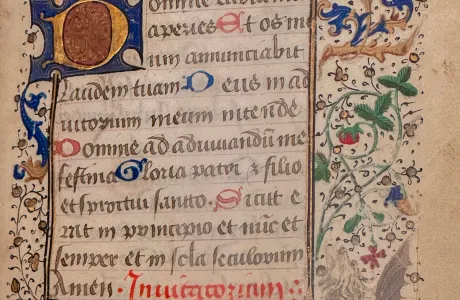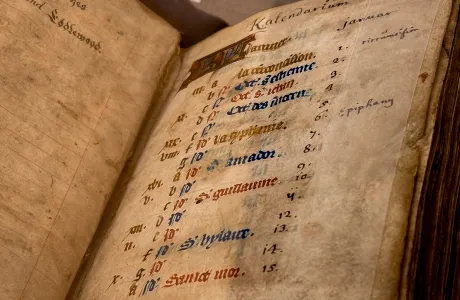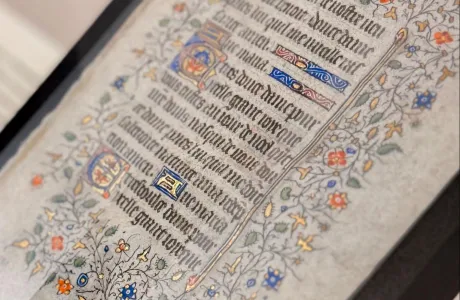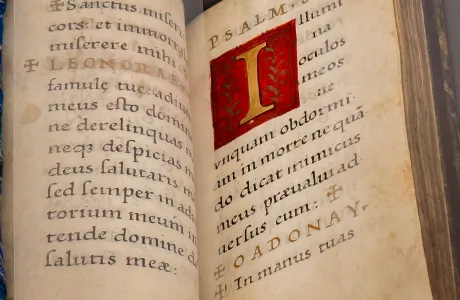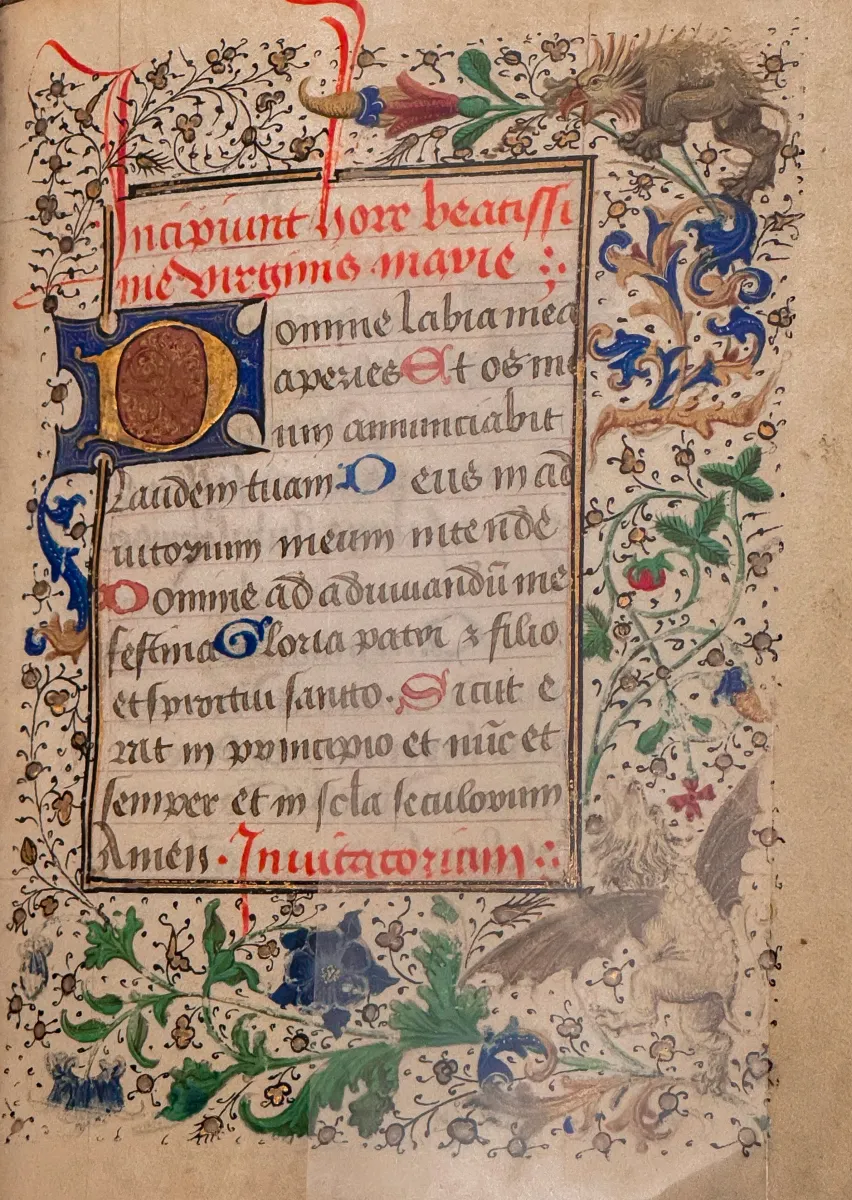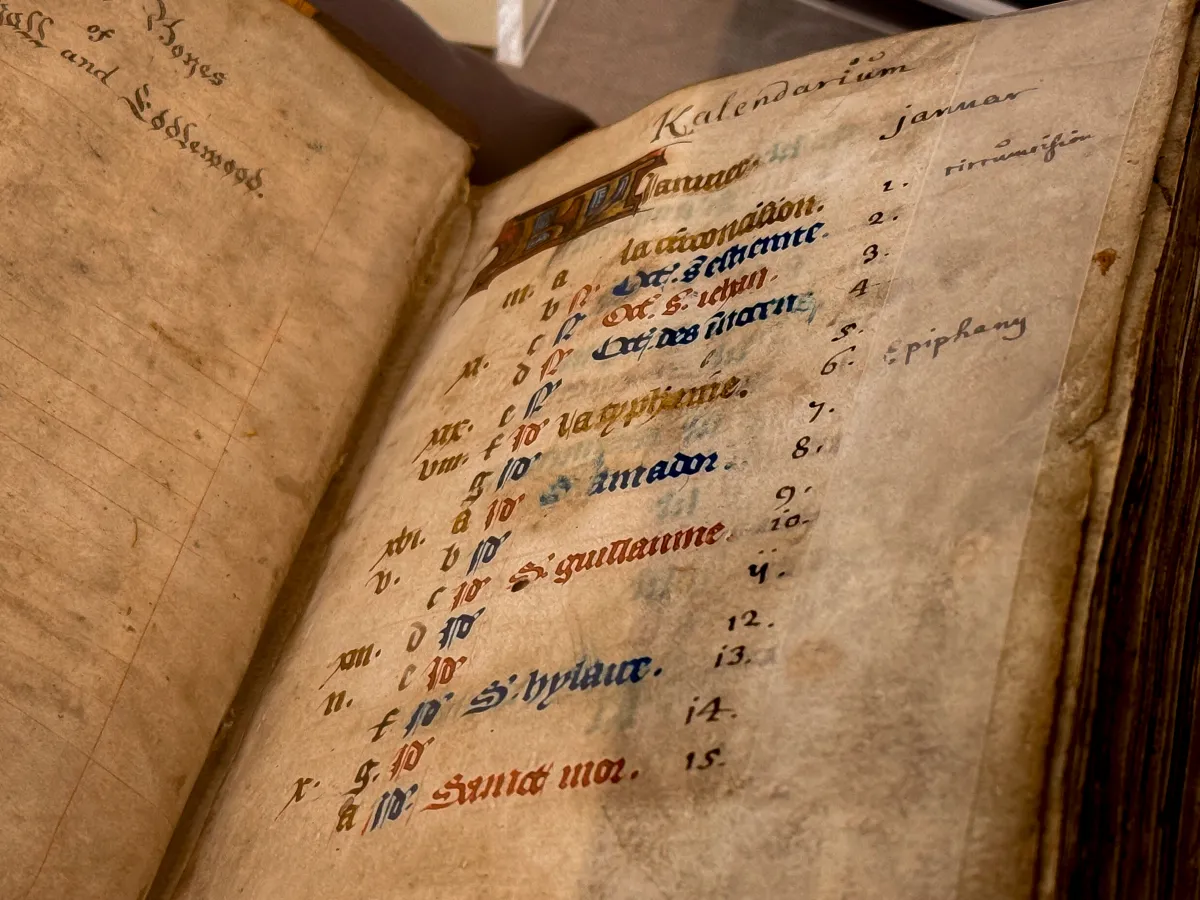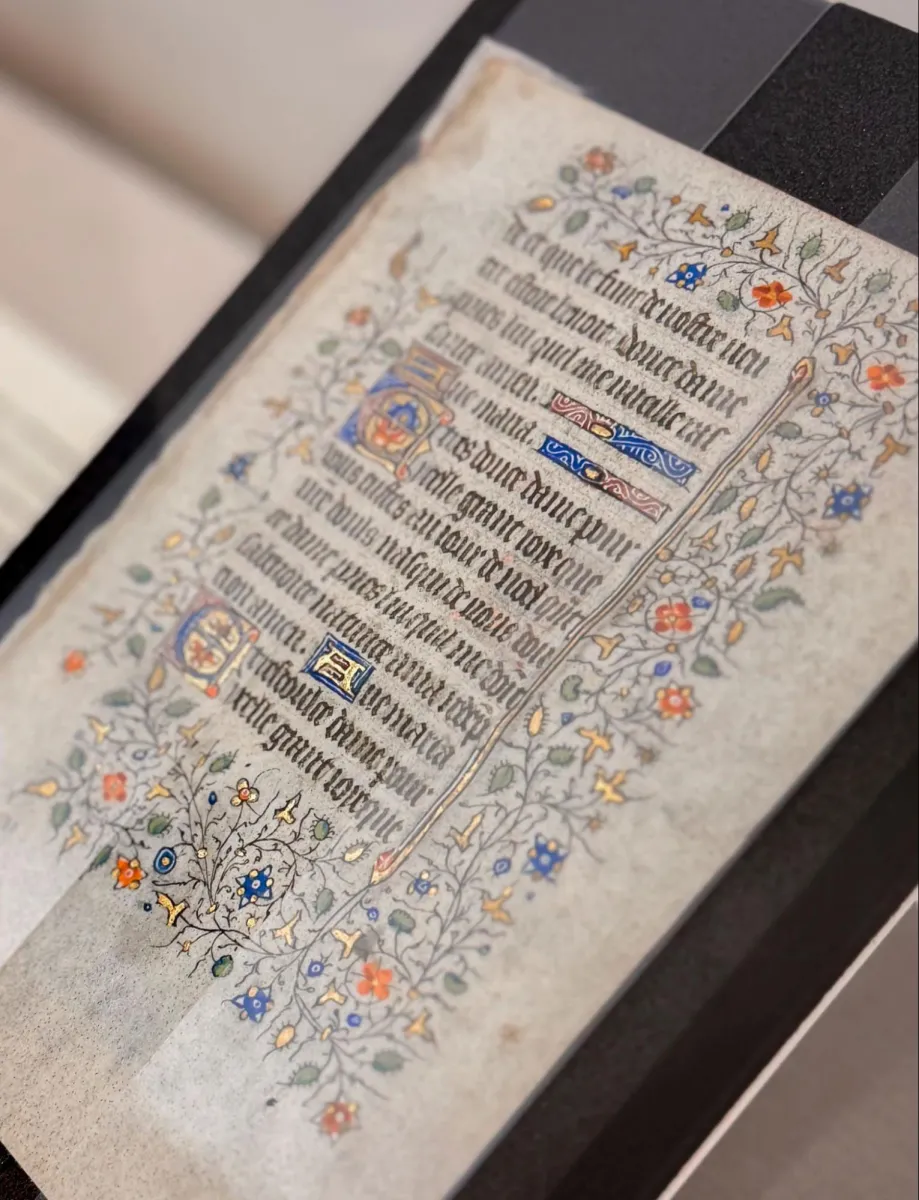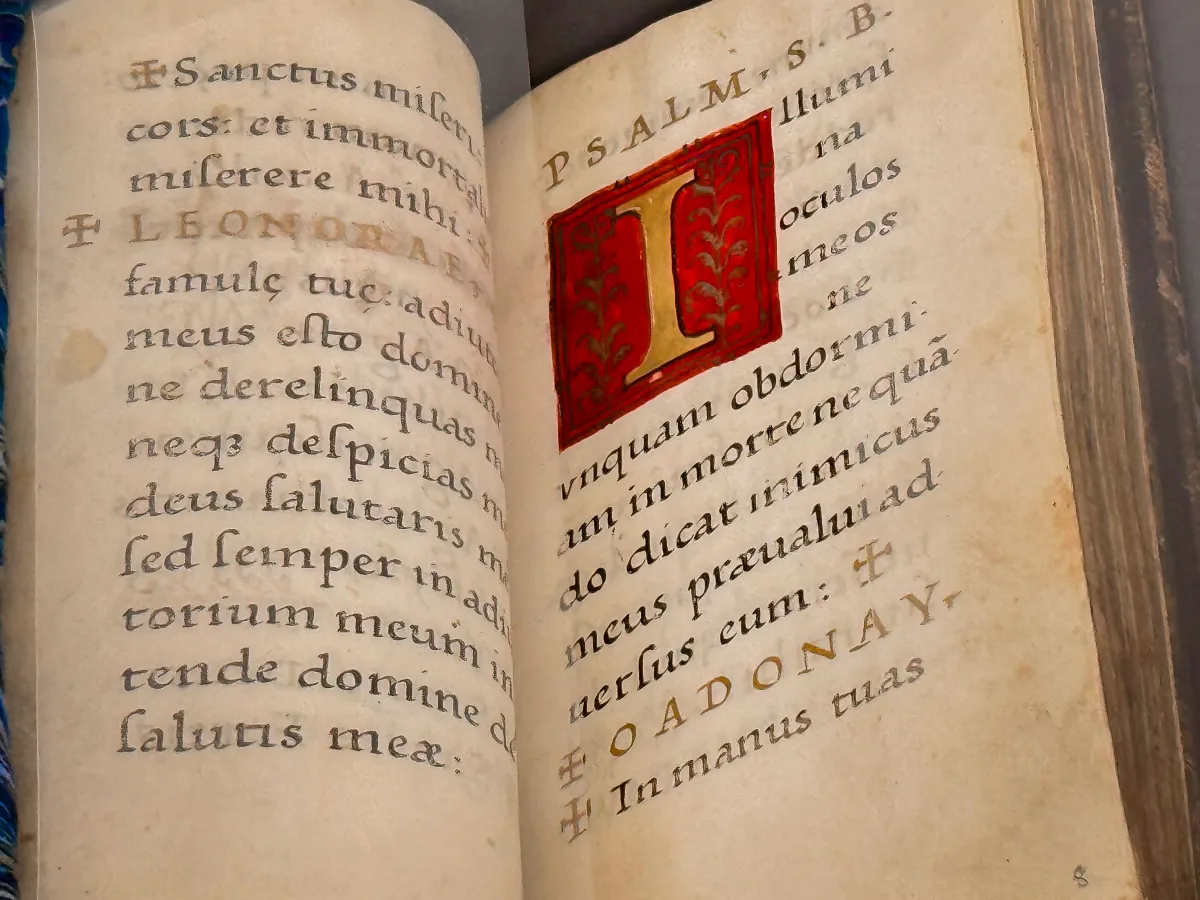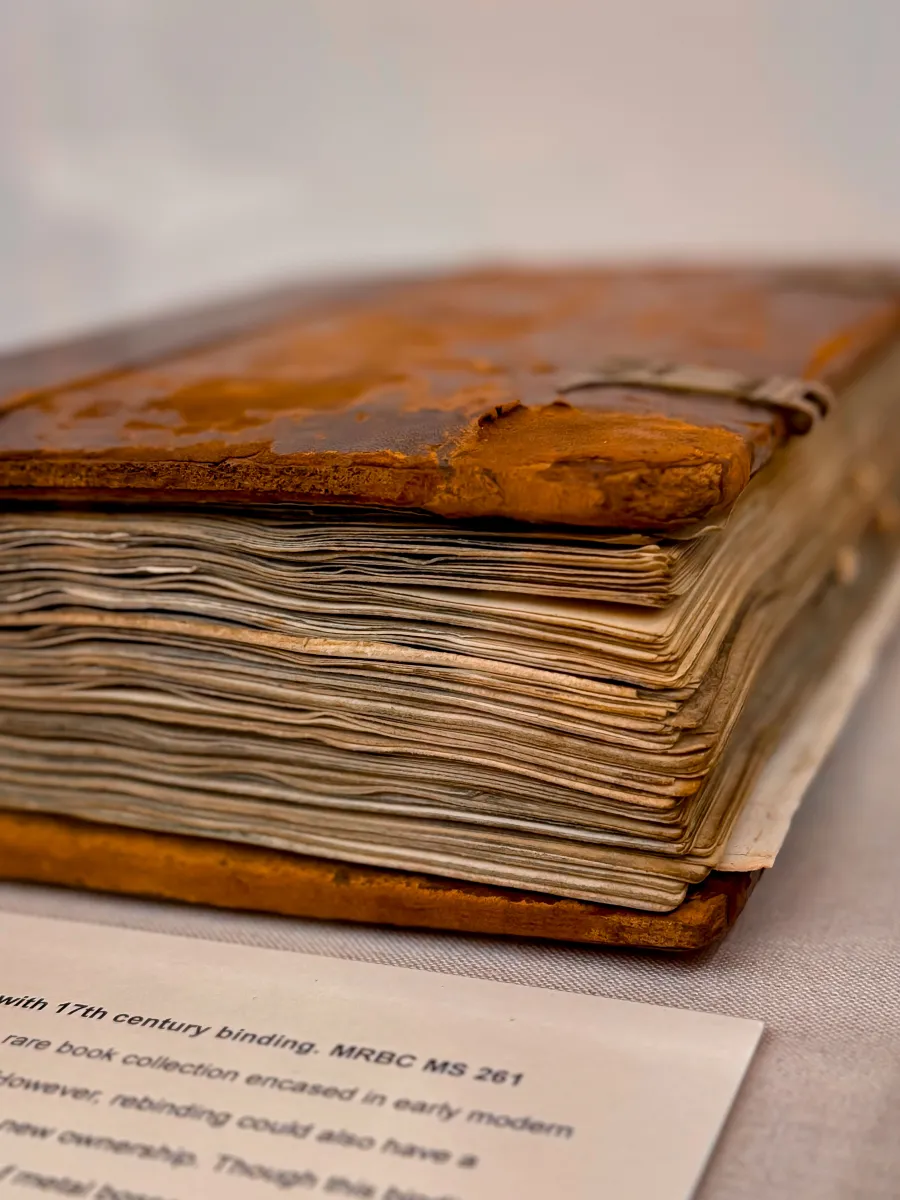Touching Time: Books of Hours and Other Late-Medieval Devotional Manuscripts
Exhibits
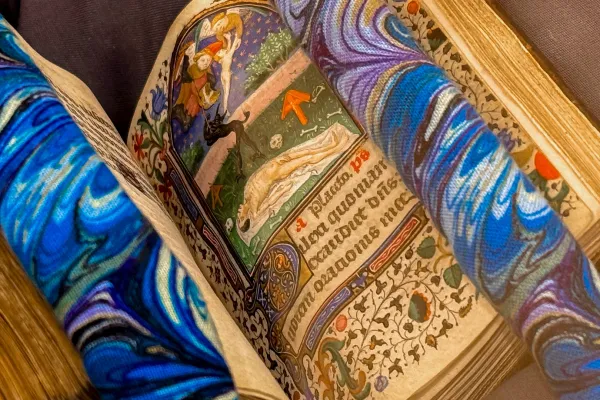
Published November 12, 2024
Neilson Library Third Floor
On display through December 11, 2024
Adriana van Manen ’25, an Ada Comstock Art History major & Medieval Studies minor, has curated a two case exhibit exploring books of hours, late-medieval devotional manuscripts, found in the Special Collections Mortimer Rare Book Collection.
“If you lived in Western Europe from the late thirteenth to early sixteenth century and owned one book, it would likely have been a book of hours,” van Manen says. “These prayer books were intended for ordinary people and sold more copies than the Bible. Their popularity reflects the growth of an urban, middle class population and rising literacy rates during the late Middle Ages.”
According to van Manen, books of hours, also known as horae, attest to a consumer demand for a connection with God. While historically known for their use by noblewomen, many families likely used books of hours in a number of different settings, including at the dinner table or for teaching children basic reading skills. The well-worn books, van Manen notes, suggest that users often turned to particular places in their texts time and again to revisit favorite passages.
“As the name suggests, books of hours structure time,” says van Manen. “The text at their core, the Little Office of the Blessed Virgin Mary, divides the day into seven hours. It provides specific prayers and readings for each hour, from Matins and Lauds at sunrise to Compline before bed.”
Lay people looked for a spiritual connection that was compatible with the busier, secular parts of their lives, says van Manen. Books of hours offered their readers the ability to easily carve out time for contemplation amid the hustle and bustle in and outside the home.
Importantly, books of hours were also accessible for a spectrum of readers as well, van Manen notes. “Many users likely read books of hours aloud, piecing together each syllable,” she says.” The idea of reading without full comprehension may seem odd. However, medieval people prayed not to express themselves, but to be faithful to God by repeating established prayers. In this sense, hora are timeless, and it is poignant to imagine how they accompanied some individuals from childhood to old age.”
Touching Time: Books of Hours and Other Late-Medieval Devotional Manuscripts will remain on display on the third floor of Neilson Library until December 11, 2024.
View Examples from the Exhibit
